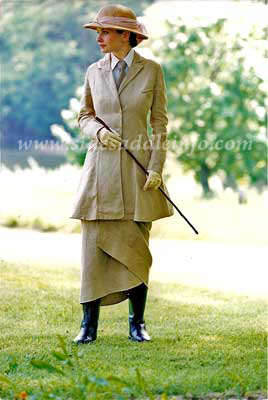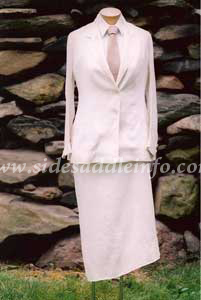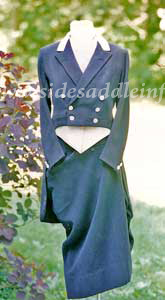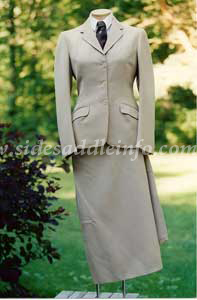THE ERA OF SIDESADDLE APRONS
1900 to present


1920-1930 No label is found in this white linen habit, suggesting it was custom made by a local tailor. The shorter, less fitted jacket indicates a time when corseting had finally passed from fashion--sometime in the early 1920’s. White linen breeches and a standing collar shirt with buttons for detachable stock tie were originally worn with this habit.
1931
This formal habit with doublebreasted shadbelly coat was made by Roberts and Carroll, London, for the MFH of the Warrenton Hunt in VA. As the abbreviated midriff did not offer sufficient coverage for cold or rainy days, it would have been reserved for Opening Meet and Hunt Club classes. Made in “Oxford Grey” cavalry twill, with collar and waistcoat in Warrenton’s colors, it represents the standardization of hunting attire for women.


1959 Sidesaddle riding was once so popular in Saddle Horse classes that habits could be ordered through major riding apparel stores. This informal habit from Millers, NYC, is made of wool gabardine in the tailored "Ivy League" silhouette of the times, and was appropriate attire for morning, afternoon, and certain evening classes. A colored silk stock tie would have been a neckwear option.

©2000-2009 N.E.A. Sidesaddle Assoc. All rights reserved. No reproduction permitted.